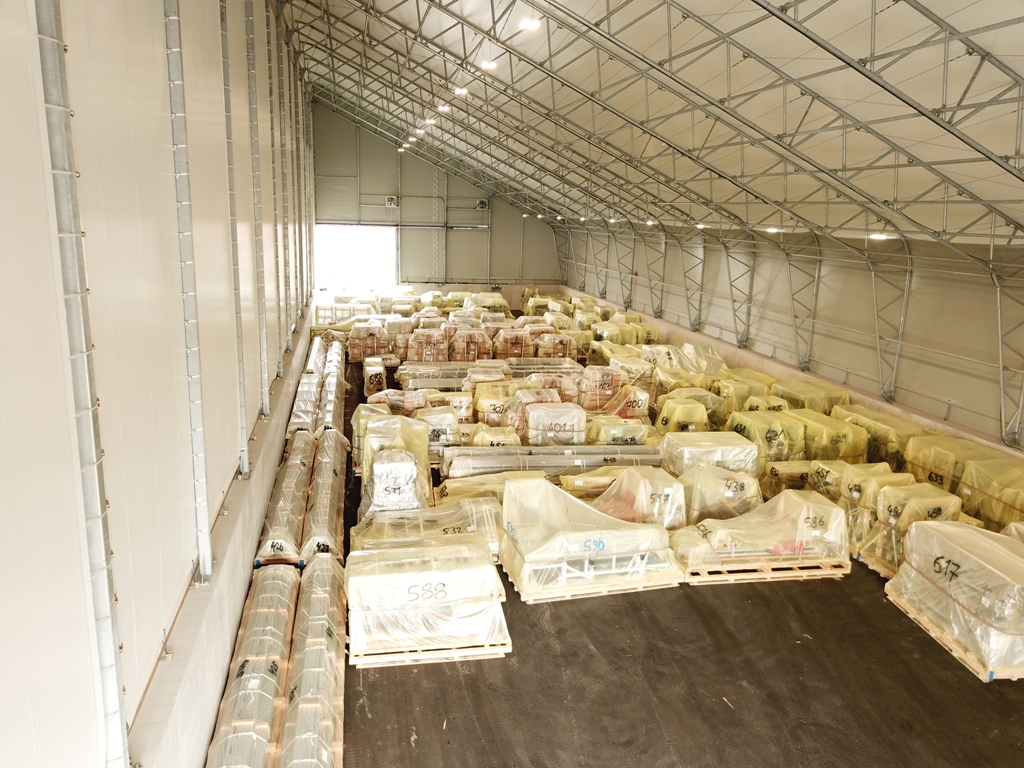Sponsored: Tension fabric structures – the sustainable takeoff
30 / 07 / 2021

Today’s tension fabric structures offer sustainable and flexible building solutions.
We live in a world that is constantly striving for improvement — better, faster, and more efficient. In recent years, that desire for “more efficient” has been supplemented with a movement toward reducing environmental impacts, broadly categorised as sustainable, environmentally friendly, or green “solutions”.
The sustainable movement has gained considerable traction in the design of new buildings, from commercial and residential construction to industrial facilities including tension fabric aircraft hangars and air cargo storage facilities.
Greater energy efficiency and the subsequent reduction in operating expenses have become owners’ highest priorities when erecting a new building and despite the Covid pandemic, owner’s report that sustainability issues play an even more important role in 2021 versus 2020.
Naturally, Sustainable Fabric
For airplane hangars, air cargo storage facilities, and other airport buildings, a certain level of energy efficiency is achieved simply by virtue of installing a building that utilizes a tension fabric roof.
Both polyvinyl chloride (PVC) and polyethylene (PE) fabrics continue to improve in quality, and their natural properties make fabric roofs ideal for energy-conscious building users.
The primary advantage of fabric structures from a sustainability standpoint is that fabric offers a high solar reflectance, keeping the roof cooler and reducing the heat island effect in the area by reflecting sunlight’s heat away from the building.
Along with reflectance, tension fabric’s high thermal emittance also contributes to the roof absorbing less heat.
During peak summer weather, these properties can combine to keep fabric roofs about 50 to 60 degrees fahrenheit cooler than roofs built with conventional materials, thereby reducing the need for temperature control measures inside the building.
Although fabric roofs are reflective, they also offer up to 10% translucency to allow natural light to permeate the structure.
Direct sunlight offers about 10,000 ft-candles of illumination, so even at 5% translucency, a fabric roof will let approximately 500 ft-candles into a building on a sunny day — well above the recommended 75 to 100 ft-candle guidelines for maintenance tasks inside an air cargo storage facility or aircraft hangar.
Most airport facilities will still need artificial lights for nighttime work and to provide adequate illumination on stormy, overcast days, but during normal daylight hours, fabric roofs effectively eliminate the need for artificial lighting.
By taking advantage of natural sunlight, tension fabric goes a long way toward reducing the electricity bill and making a building more energy efficient. And, for those interested in the accolades, these benefits also help to rapidly accumulate points on the path to LEED certification.
Sustainable Engineering
Though certain sustainable benefits of tension fabric itself have always existed, other sustainable aspects of tension fabric structures can be taken advantage of by the air cargo industry.
Usually in airport locations a tension fabric structure can be anchored to an existing concrete apron saving time, natural resources and money and should the need arise the tension fabric structure can be relocated.
Computer aided design and engineering have made it easier to add items like interior fabric liners and insulation to a structure’s roof and sidewalls.
Temperature control barriers can be achieved simply by adding a liner to the main fabric skin.
For even more effectiveness, the liner can be combined with insulation material to create a system with an insulation value of up to R-40.
This level is capable of meeting almost all relevant energy codes in the country, providing significant heating and cooling cost savings.
Building users interested in having insulation and natural light can get the best of both worlds by incorporating a fabric skylight.
A given insulation package may dictate covering much of the structure’s translucent fabric but building manufacturers can add the insulation required to achieve energy codes while still leaving a large enough portion of uncovered fabric as a skylight to provide ample illumination levels inside.
Another feature affecting a fabric building’s interior environment is ventilation, which can be accomplished through passive or mechanical means. HVLS (high-volume, low-speed) fans or heavy-duty HVAC systems can be mounted on truss frame or a rigid frame structure if necessary, but users can also choose a natural gravity ventilation system that relies simply on the movement of hot air.
In addition to taking advantage of potential energy savings, some building owners will opt to generate their own power using solar panels.
This makes them less dependent on outside power and, in some cases, allows them to become self-sufficient by fulfilling all their own energy needs.
Just Getting Started
Another certainty is that as more airports and other fabric building owners experience the long-term energy savings that put more “green” in their pockets, the number of sustainable structure designs will increase.
Brite Rigid Frame Buildings USA designs, manufactures, and installs custom made tension fabric structures almost anywhere in the world.
Our large-scale structures cover all types of aviation MRO and Air Cargo operations. Our Hot dip galvanized steel frames and premium quality architectural fabric ensure that our fabric structures are built to last and are virtually maintenance free.
















